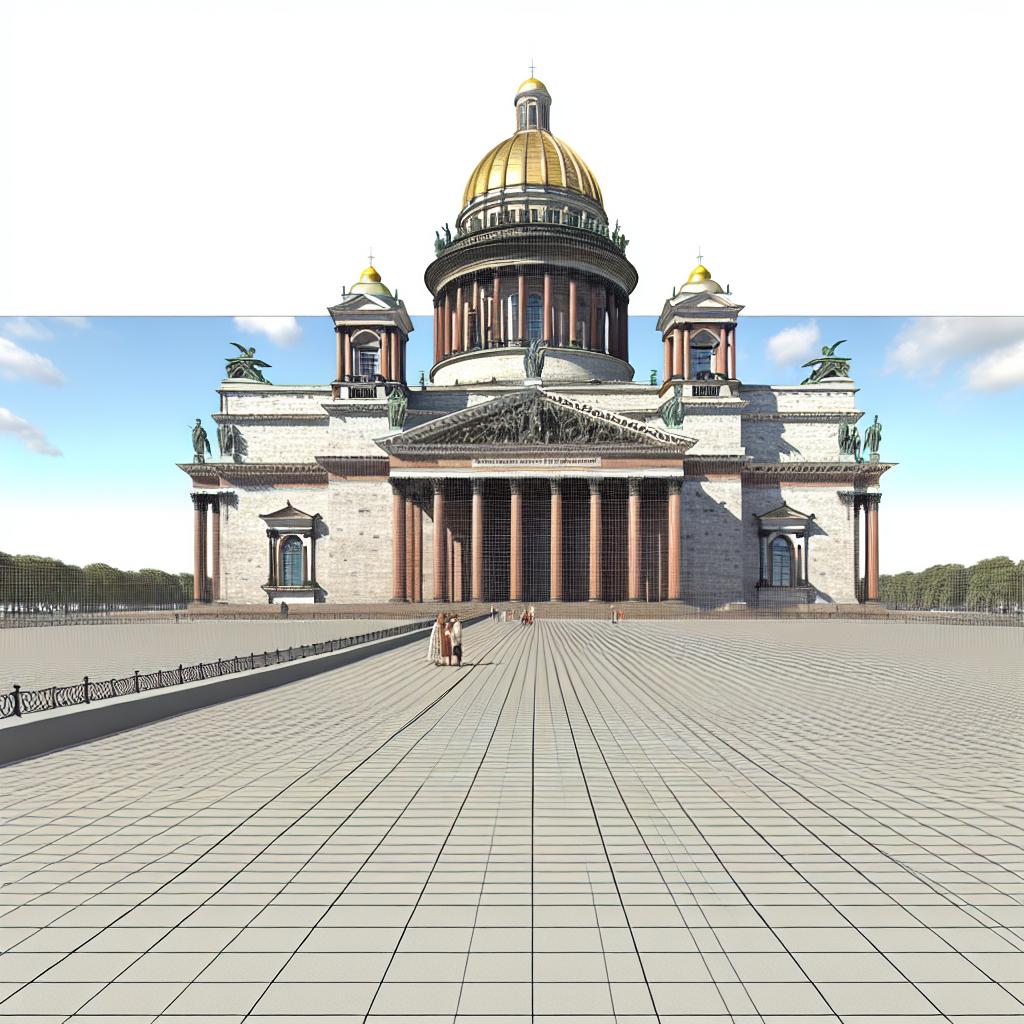Overview of Saint Isaac’s Cathedral
Saint Isaac’s Cathedral, situated in the heart of St. Petersburg, Russia, stands as one of the most remarkable landmarks in the city. Celebrated for its impressive architectural design and historical importance, the cathedral remains a significant cultural icon, representing the rich Russian heritage through its monumental presence.
History and Construction
The origins of Saint Isaac’s Cathedral can be traced back to the early 19th century when it was commissioned by Tsar Alexander I. It was intended to replace an earlier church located on the same site. The architectural vision for this grand structure was brought to life by the French architect Auguste de Montferrand. His designs were ambitious, envisioning a structure that would embody the spirit and grandeur of Russian architecture. Construction commenced in 1818, a massive undertaking that would span 40 years, finally reaching its completion in 1858.
The process of constructing the cathedral is legendary, not just for its scale but also for the pioneering engineering techniques employed. One of the most fascinating elements of its construction is the use of enormous granite columns. These columns, crafted from single blocks of stone, highlight the considerable effort and resources invested in the cathedral’s creation. The engineering feats required to position these colossal blocks into place were unprecedented at the time, showcasing a blend of skill and determination.
Architectural Features
Saint Isaac’s Cathedral is a testament to a harmonious blend of architectural styles, with a dominant neoclassical influence. A standout feature of the structure is the central dome, which plays a critical role in defining the St. Petersburg skyline. This dome is gilded with over 100 kilograms of gold, adding a dazzling focal point to its silhouette. The exterior of the cathedral is adorned with an array of sculptures, each an expression of artistic excellence. Inside, visitors are treated to an opulent interior, where murals, mosaics, and precious stones abound, providing a visual feast that has captivated visitors for generations.
The architectural design of Saint Isaac’s is not only large in terms of physical dimensions but is also capable of accommodating vast congregations. The cathedral can host up to 14,000 individuals, making it not only a spiritual bastion but also a gathering place of significant capacity.
Current Role and Function
In contemporary times, Saint Isaac’s Cathedral serves a dual role, functioning both as a museum and a place of worship. Each year, it draws millions of tourists who come to admire its stunning artistry and delve into its historical narrative. The cathedral’s status as a museum allows for the preservation of its intricate artworks and architectural aesthetics, ensuring it remains accessible to future generations.
One of the highlights for visitors is the opportunity to ascend to the cathedral’s colonnade. From this vantage point, breathtaking panoramic views of St. Petersburg can be appreciated, offering a unique perspective of the cityscape that surrounds the cathedral.
Visiting Information
For those planning a visit to Saint Isaac’s Cathedral, it is advisable to seek out visitor information through local tourism resources or specialized guides. Such information typically includes details regarding the cathedral’s hours of operation, which may fluctuate based on seasonal changes or special events. To ensure a seamless visit, it is beneficial to check the official schedule ahead of time. Visitors can learn more from local resources to make the most of their experience at this historic marvel. Throughout the year, the cathedral remains a beacon of cultural and historical exploration, inviting all who visit to engage with its storied past and architectural beauty.

